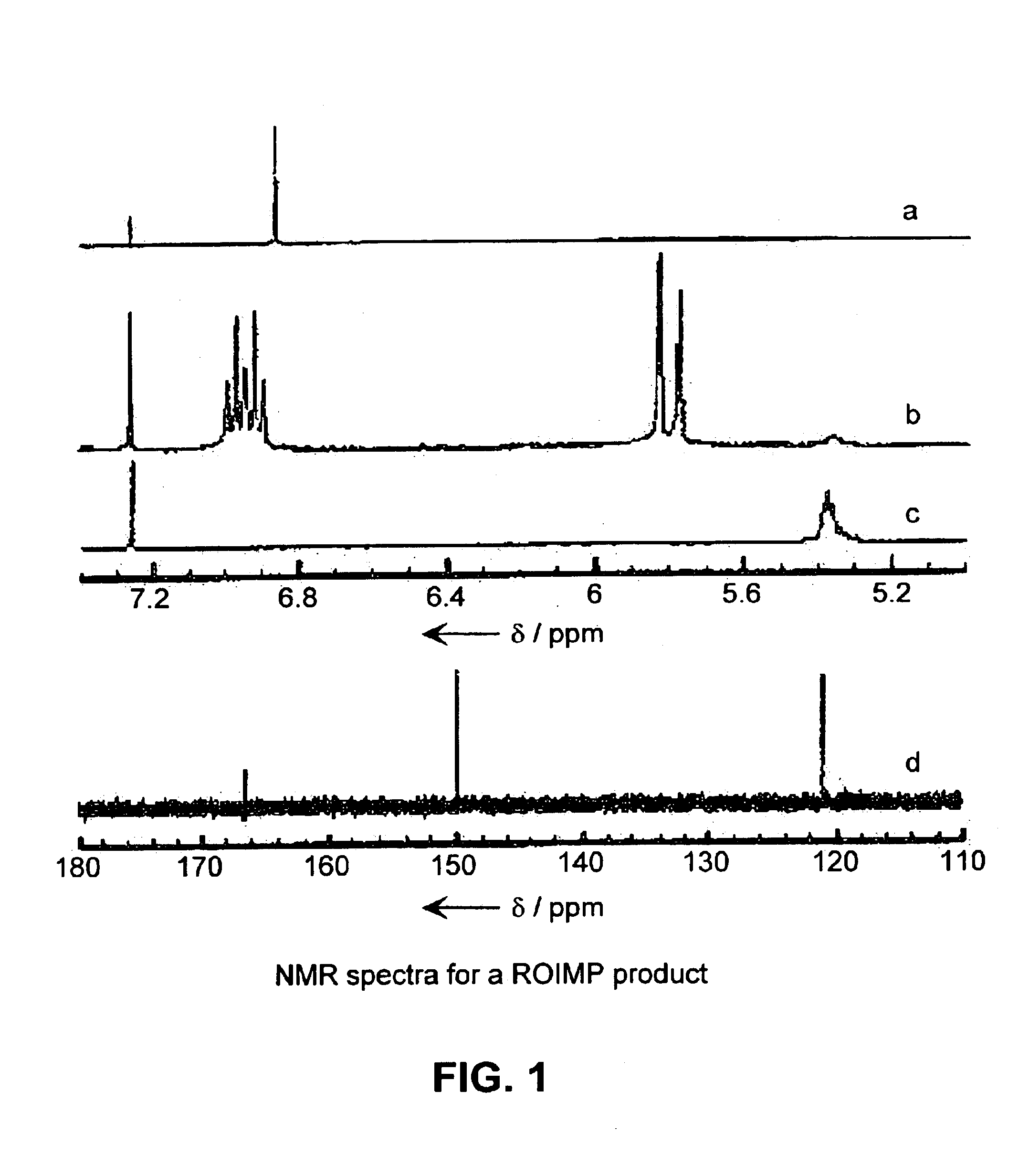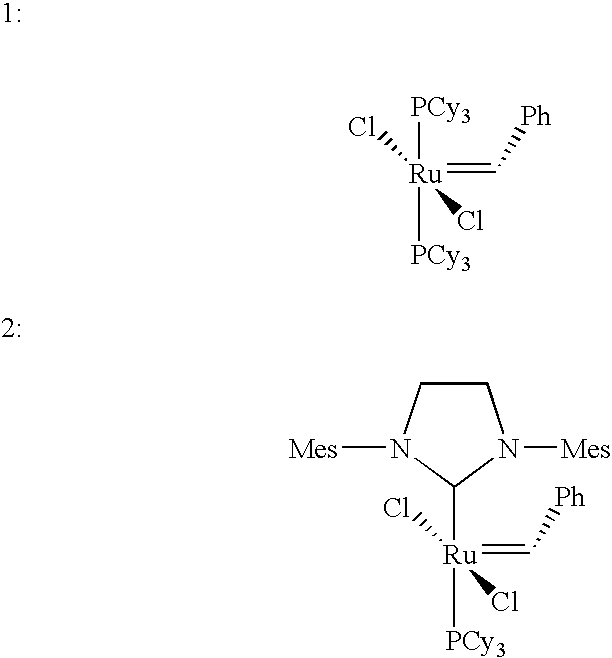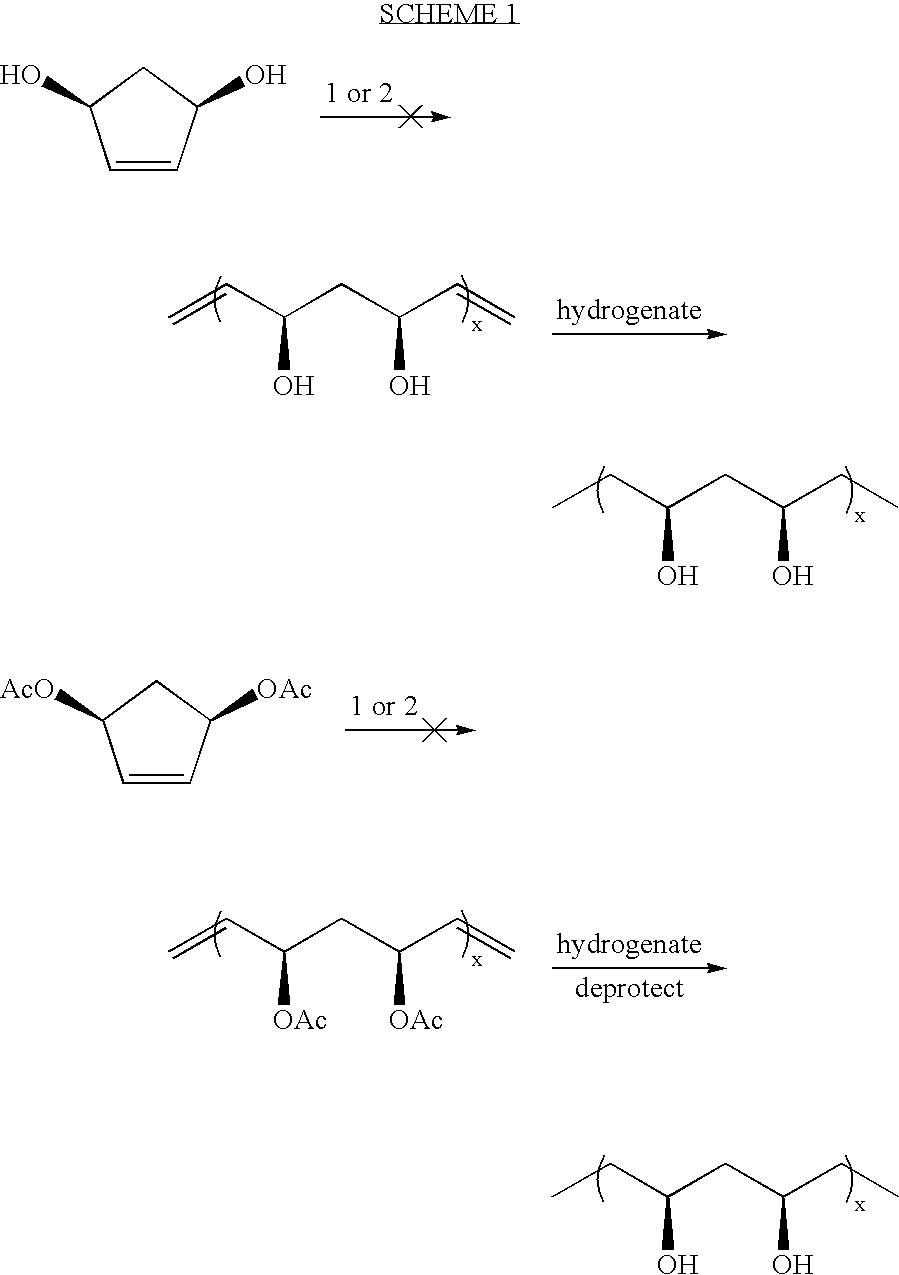Synthesis of A,B-alternating copolymers by olefin metathesis reactions of cyclic olefins or olefinic polymers with an acyclic diene
a technology of olefin and cyclic olefin, which is applied in the direction of group 4/14 element organic compounds, chemical/physical processes, hydrocarbons, etc., can solve the problems of limiting the barrier properties of the final evoh copolymer, reducing the utility of the polymer prepared, and less stable catalysts with respect to polar functional groups
- Summary
- Abstract
- Description
- Claims
- Application Information
AI Technical Summary
Benefits of technology
Problems solved by technology
Method used
Image
Examples
example 1
[0248]A small flask was charged with 1,4-butanediol diacrylate 90 mg, (0.45 mmol) in 2 mL of CH2Cl2 (solution of diene with two terminal olefinic groups) and a stir bar. Catalyst (2) 2.7 mg and cyclooctene 65 μL (0.45 mmol) (total monomer to catalyst ratio of 290:1 and monomer to monomer ratio of 1:1). The mixture was quickly degassed by dynamic vacuum and the flask was fitted with a condenser and heated at reflux under argon for 6 h. The product was precipitated into 50 mL of stirring methanol. The white polymer precipitate was washed several times with methanol and dried in vacuo overnight; yield of regioregular A,B-alternating copolymer product 108 mg (0.38 mmol), about 84% yield. The polymer had a high molecular weight of 90100 g mol−1 (Mn / PDI, determined by CH2Cl2 GPC relative to polystyrene standards). 1H NMR (300 MHz, CDCl3): δ=6.93 (dt, J=7.2, 15.9 Hz, 1H), 577 (d,J=15.9 Hz, 1H), 4.13 (br s, 2H), 2.12 (m, 2H), 1.73 (m, 2H), 1.43 (m, 2H), 1.30 ppm (m, 2H). 13C NMR (75 MHz, CD...
example 1a
[0250]Example 1 was repeated except that the cyclic olefin (cyclooctene) was replaced with the bicyclic olefin norborene and the reaction was conducted with a monomer / catalyst ratio of 100. The white polymer precipitate was washed several times with methanol and dried in vacuo overnight to provide a yield of 95% regioregular A,B-alternating copolymer product in about 87% yield.
example 1b
[0251]Example 1 was repeated except that the diene (1,4-butanediol diacrylate) was replaced with the a diene having the formula CH2═CH—C(═O)—N(-phenyl)-(CH2)6—N(-phenyl)-C(═O)—CH═CH2 and the reaction was conducted with at a catalyst concentration of 3.3 mole percent with respect to the diene. The polymer precipitate was washed several times with methanol and dried in vacuo overnight to provide a yield of 95% regioregular A,B-alternating copolymer product in about 99% yield, having a MW of 9700 and a PDI of 1.45.
PUM
 Login to View More
Login to View More Abstract
Description
Claims
Application Information
 Login to View More
Login to View More - R&D
- Intellectual Property
- Life Sciences
- Materials
- Tech Scout
- Unparalleled Data Quality
- Higher Quality Content
- 60% Fewer Hallucinations
Browse by: Latest US Patents, China's latest patents, Technical Efficacy Thesaurus, Application Domain, Technology Topic, Popular Technical Reports.
© 2025 PatSnap. All rights reserved.Legal|Privacy policy|Modern Slavery Act Transparency Statement|Sitemap|About US| Contact US: help@patsnap.com



